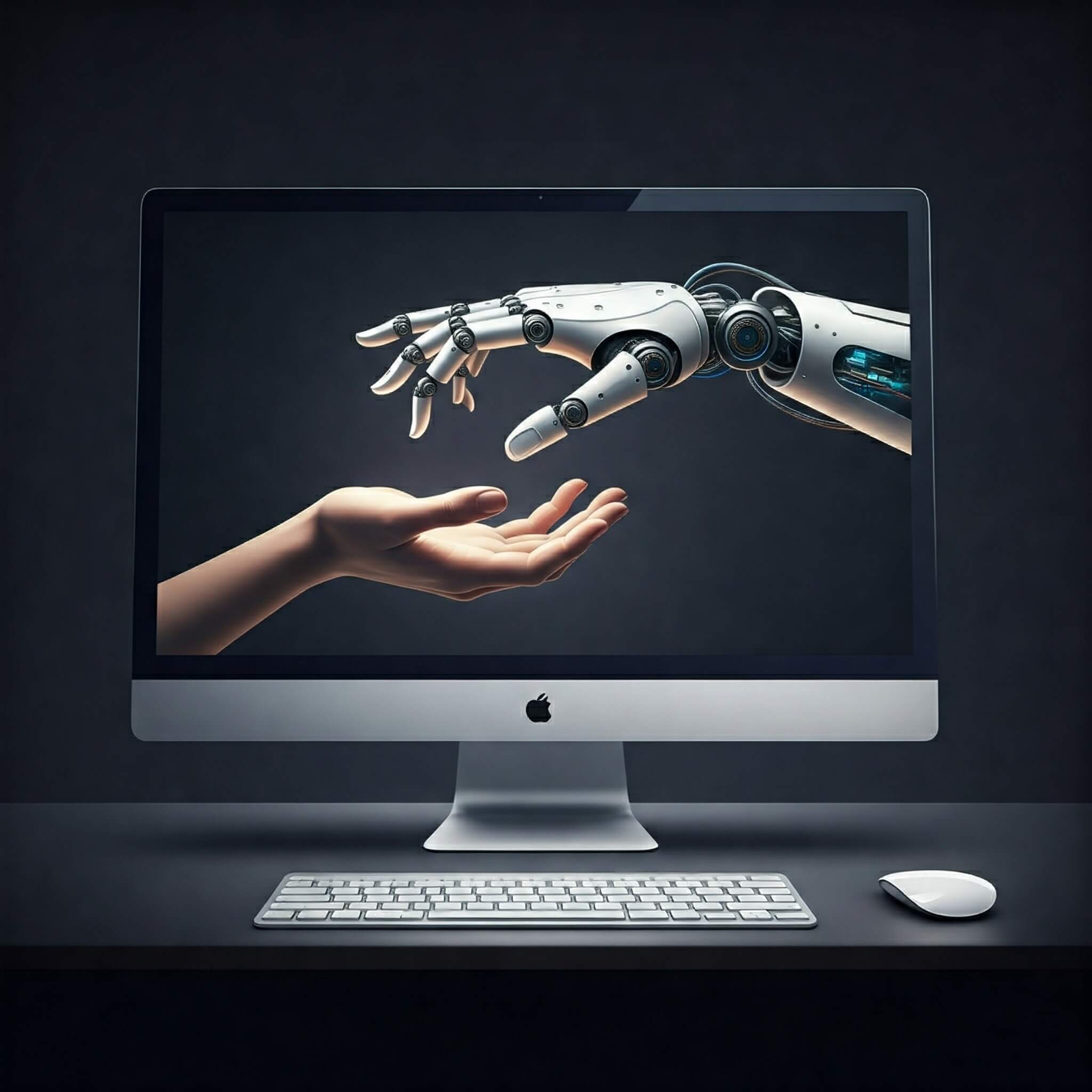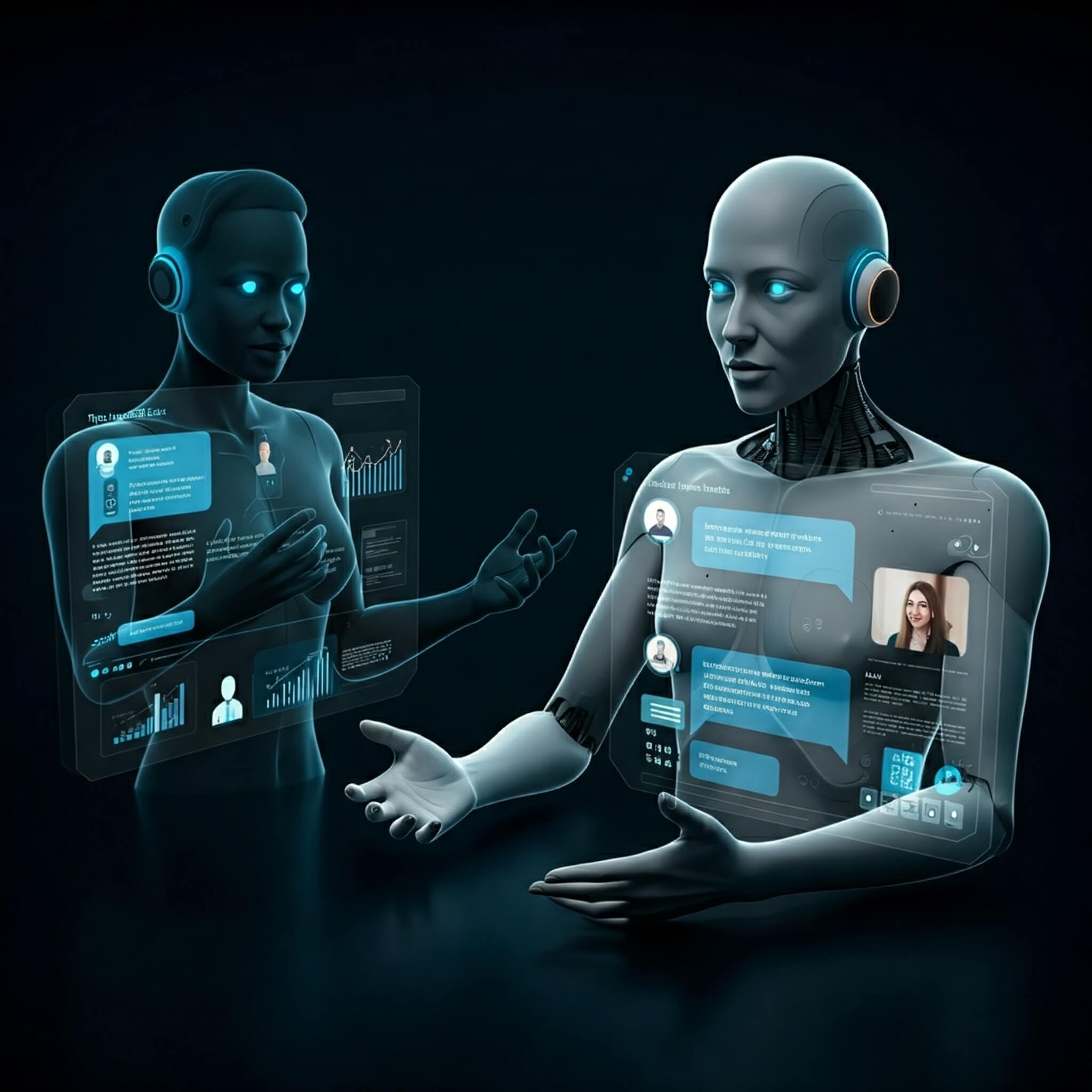
What is cognitive automation and why does it matter?
Once, the term ‘cognition’ was exclusively linked to human capabilities. Originally, it referred to the awareness of mental activities like thinking, reasoning, remembering, imagining, learning, and language utilization. It’s quite fascinating that, given our technological strides in artificial intelligence (AI) and generative AI, this concept is increasingly relevant to computers as well.
Almost there, but not quite.
Organizations are perpetually in pursuit of creative approaches to make complex business processes more efficient, enhance productivity, and achieve a competitive edge. In this technological evolution, a new solution has emerged at the crossroads of AI and automation: cognitive automation, or intelligent automation (IA). This innovation leverages AI’s power to automate tasks that were once solely human, heralding a new era of digital transformation in business operations.
Cognitive automation holds the promise of transforming the workplace by significantly boosting efficiency and enabling organizations and their workforce to make quick, data-informed decisions. Let’s delve into understanding how this transformation is achieved.
The Mechanism behind Cognitive Automation
What is the Mechanism behind Cognitive Automation? Cognitive automation, also known as IA, integrates artificial intelligence and robotic process automation to create intelligent digital workers. These workers are designed to optimize workflows and automate tasks efficiently. This integration often extends to other automation methods like machine learning (ML) and natural language processing (NLP), enabling the system to interpret and analyze data across various formats.
Similar to the way our brain’s neural networks form new pathways when processing new information, cognitive automation identifies patterns and utilizes these insights for decision-making. Over time, these digital workers evolve, learning from each interaction and continuously refining their ability to handle complex tasks and scenarios, much like the human brain adapts and learns from experience.

Comparing Cognitive Automation and Traditional Automation Tools
Navigating the rapidly evolving landscape of ML/AI technologies is challenging, not only due to the constantly advancing technology but also because of the complex terminologies involved. Adding to the complexity, these technologies are often part of larger software suites, which may not always be the ideal solution for every business.
Let’s explore how cognitive automation fills the gaps left by traditional automation approaches, such as Robotic Process Automation (RPA) and integration tools like iPaaS.
Traditional RPA primarily focuses on automating tasks that involve swift, repetitive actions, often with structured data, but lacks in contextual analysis and handling unexpected scenarios. It typically operates within a strict set of rules, leading to its early characterization as “click bots”, though its capabilities have since expanded.
These automated processes function well under straightforward “if/then” logic but struggle with tasks requiring human-like judgment, particularly when dealing with unstructured data.
RPA vs AI-based Automation
RPA is certainly capable of enhancing various processes, especially in areas like data entry, automated help desk support, and approval routings. But it has its limitations.
On the other hand, cognitive automation, or Intelligent Process Automation (IPA), effectively handles both structured and unstructured data, making it suitable for automating more intricate processes. Cognitive automation integrates cognitive capabilities, allowing it to process and automate tasks involving large amounts of text and images. This represents a significant advancement over traditional RPA, which merely replicates human actions in a step-by-step manner. Cognitive automation offers a more nuanced and adaptable approach, pushing the boundaries of what automation can achieve in business operations.
Understanding the Differences: RPA vs. Cognitive Automation
The integration of advanced technologies like AI and ML with automation elevates RPA into a more advanced realm. Traditional RPA, when not combined with intelligent automation’s additional technologies, generally focuses on automating straightforward, repetitive tasks that use structured data.
RPA essentially replicates manual tasks such as data entry through predefined rules and keystrokes. While effective in its domain, RPA’s capabilities are significantly enhanced when merged with cognitive automation. This combination allows for the automation of complex, end-to-end processes and facilitates decision-making using both structured and unstructured data.
While RPA offers immediate, tactical benefits, cognitive automation extends its advantages into long-term strategic growth. This is due to cognitive technology’s ability to rapidly scale across various departments and the entire organization. As it operates, it continuously adapts and learns, optimizing its functionality and extending its benefits beyond basic task automation to encompass more intricate, decision-based processes.
Understanding the Capabilities of Cognitive Automation
Cognitive automation solutions differentiate themselves from other AI technologies like machine learning or deep learning by emulating human cognitive processes. This involves utilizing technologies such as natural language processing, image processing, pattern recognition, and crucially, contextual analysis. These capabilities enable cognitive automation to make more intuitive leaps, form perceptions, and render judgments.
Cognitive automation can also be understood as a system that partly learns through association. It processes unstructured data to establish relationships and generate metadata such as indices, tags, annotations. This system actively seeks similarities in business-related data – like invoices, purchase order numbers, shipping addresses, assets, and liabilities. It constructs these relationships by asking questions such as:
- Have I encountered this previously?
- What actions were taken in similar situations?
- Does this relate to something I’ve previously processed?
- How strong is this connection?
- Who or what is implicated in this scenario?
Practical Examples of Cognitive Automation in Action
-
Automated Customer Support Ticket Categorization: Cognitive automation tools can analyze and categorize incoming customer support tickets based on their content, automatically routing them to the appropriate department for faster resolution.
-
Healthcare Patient Data Management: In healthcare, these tools can streamline patient data management by extracting and organizing information from various medical forms, ensuring efficient and accurate patient record keeping.
-
Financial Transaction Monitoring: For financial institutions, cognitive automation can be utilized to monitor transactions, identifying patterns indicative of fraudulent activity and flagging these for further investigation.
-
Retail Inventory Management: In retail, cognitive automation can optimize inventory management by analyzing sales data and customer trends, automatically adjusting stock levels and ordering new supplies as needed.
-
Real Estate Document Analysis: In the real estate sector, these tools can expedite property transactions by automatically analyzing and processing complex legal documents, reducing the time and effort needed for property sales and purchases.
-
Code Quality Analysis: Cognitive automation tools can be used to analyze and review code, identifying potential errors, suggesting optimizations, and ensuring adherence to coding standards, thereby enhancing overall code quality and maintainability.
-
Automated Testing and Bug Detection: These tools can automate the process of testing software, detecting bugs and vulnerabilities early in the development cycle, reducing the time and resources spent on manual testing.
-
Research Data Analysis: In R&D, cognitive automation can process and analyze large datasets, extracting key insights and patterns, aiding in faster decision-making and innovation in research projects.
-
Customer Sentiment Analysis: Cognitive automation can analyze customer feedback across various platforms, providing insights into sentiment trends, helping tailor marketing strategies to better meet customer expectations.
-
Personalized Marketing Campaigns: These tools can automate the creation of personalized marketing campaigns by analyzing customer data, ensuring more effective targeting and higher engagement rates.
What are cognitive automation’s advantages?
Cognitive automation’s primary advantage lies in integrating unstructured data from various sources into business workflows. Other benefits include:
- Automating decision making to reduce manual intervention, bias, and delays in business processes.
- Enhancing customer experience through a combination of RPA bots, AI chatbots, and virtual assistants.
- Maximizing Efficiency: Integrates AI with existing automation tools for increased productivity.
- Ensuring Accuracy: Reduces human errors in repetitive and complex tasks.
- Data Insight Extraction: Analyzes big data for valuable, actionable insights.
- Cost Reduction: Lowers expenses by automating routine tasks.
- Scalable Operations: Easily adjusts to fluctuating workloads and demands.
- Improved Customer Service: Enhances interaction with AI-driven support tools.
- Empowering Employees: Frees up human resources for strategic tasks.
- Informed Decision Making: Facilitates data-driven, strategic business choices.
- Adaptive Learning: AI systems evolve and improve over time.
- Innovation Drive: Aids in developing new, customer-focused products and services.
The Future Direction of Cognitive Process Automation
The essence of cognitive process automation lies in its ability to accelerate activities: thinking, learning, and adapting. For organizations aiming to outpace their competitors, mastering the use of this technology is crucial.
What’s the Path to Adoption?
Cognitive Automation, when strategically executed, has the power to revolutionize your company’s operations through workflow automation. However, if initiated on an unstable foundation, your potential for success is significantly hindered.
As you integrate automation into your business processes, it’s vital to identify your objectives, whether it’s enhancing customer satisfaction or reducing manual tasks for your team. Reflect on the ways this advanced technology can be employed and how it will contribute to achieving your specific business goals. By aligning automation strategies with these goals, you can ensure that it becomes a powerful tool for business optimization and growth.







